Ryan Shore: On Scoring Horror, Comedy, and the Meeting of the Two
Interview by Randall D. Larson
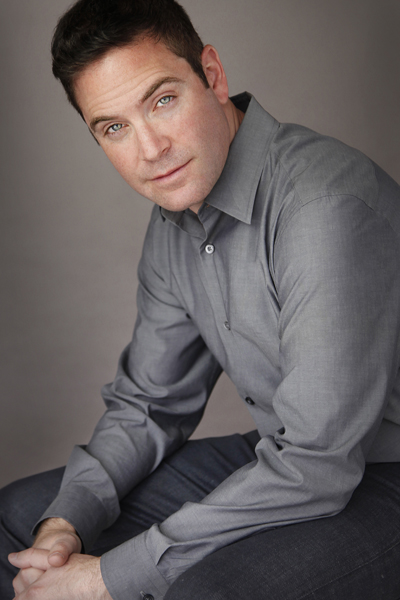
Canadian-born composer Ryan Shore happens to be the nephew of Howard Shore, but he’s emerged over the last decade into a notable film composer entirely in his own right. Educated at the Berklee College of Music where he studied film scoring and saxophone, Ryan began scoring films in 1998 and in the ensuing dozen years has amassed a prodigious three dozen scoring projects for films and television. He began his career in New York City working for his uncle Howard with a four-year apprenticeship doing music preparation, orchestrations, and music producing. He also worked on Broadway and theater, went on tour playing saxophone with Matchbox Twenty, and began scoring short films at NYU. After scoring his first four features in NYC, Ryan moved to LA to continue scoring, where opportunities found him scoring more than fifty films, television episodes, and shorts in the ensuing eighteen years. Many, though certainly not all, have allowed Shore to contribute his musical voice to science fiction, fantasy, and horror pictures; that being the subject of this webpage, and my own specialized studies, I’ve had the chance to speak to Ryan Shore at length about his scoring work in these genres.
Q: You’re scored a number of horror films as well as comedy films. How does scoring comedy and horror differ (some writers have considered them two sides of the same coin – each dependent on build up; only the payoff is different, a laugh or a scream)? What techniques do you find useful in augmenting the audience’s emotional response to these two types of films?
Ryan Shore: I really find the purpose of music in all types of movies to be the same, and that is to help make the audience feel something. Certainly the aspect of timing really comes into play even more so directly in comedy, since timing is everything in comedy. In my experience, I’ve found that comedies seem to lend themselves much more naturally to having musical themes and melodies, which I love writing. But I think the music scoring techniques are still the same: tension and release, building emotions and releasing them, motivic development, underscoring the arcs of the scenes and the film as a whole, being creative with the instrumentation, etc. No matter the type of film or the approach to the music, it’s all music to me, and I’m very lucky to have the opportunities to explore it and to work together with such talented filmmakers.
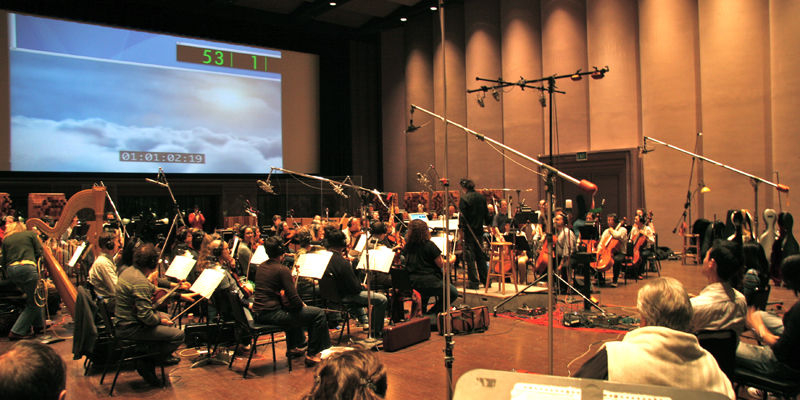
Q: How did you musically enhance the growing sense of menace and ultimate terror in HEADSPACE (2005)? What did the film need to convey the psychological terrors inherent within its plot?
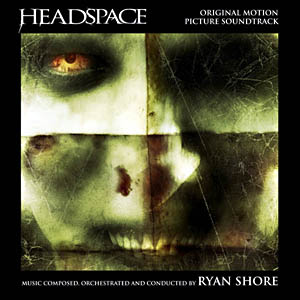
Ryan Shore: I loved writing this score. It was one of the first times I was able to record a feature film score with a full orchestra. The entire movie is about what is happening in the mind of Chris Denham’s character, so it gave me an opportunity to score the film as a psychological thriller/horror as opposed to slasher type of horror film. That allowed me to write a more musically developed score, as opposed to just hits and stings which can be very common in horror films. I wrote a main theme that appears in the opening credits, which I then developed throughout the film. I also wrote a brooding, swelling theme, which is a series of chords that have a feeling of moving forward in a slow but deliberate manner. I composed some original classical music for string quartet which plays in the therapists’ office, and some original Gregorian chant which we recorded with an all-male choir. I also created some free jazz pieces which I performed on saxophone with my jazz quartet. Those pieces are both cerebral and instinctual in nature, and they can be heard in Harry’s apartment. One of the highlights for me, in addition to recording and conducting the score with the full orchestra, was arranging, orchestrating, adapting, and conducting the Bach/Gounod “Ave Maria” (which Bach originally composed for solo piano) for the full symphony. Katrina Silhavikova sang it so beautifully. It was a truly memorable musical highlight for me. In regard to affording it, Andrew van den Houten, who both directed and produced, strongly believed in the importance of what a live orchestra could contribute to the film, and so he made it a priority to budget for it. I’m very grateful to him that he did.
Q: JACK BROOKS MONSTER SLAYER (2007) gave you a chance to explore a multifaceted film that had comedy, heroics, and horror all in one. How did you approach scoring this film and which of its elements did you ground the score on?
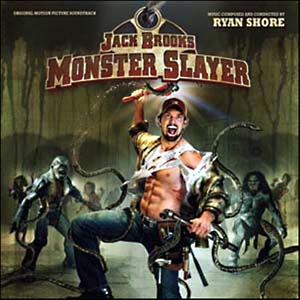
Ryan Shore: The filmmakers knew they wanted the score to have a full orchestral, epic sound, so the direction to compose for full orchestra was established from the beginning. Then my focus turned to finding the balance between the different genres, which was one the most enjoyable part of the process. Throughout most of the story the music plays the role of the “straight man”, underscoring the real emotions of the horror and action. There were a few moments where I leaned the music more towards comedy (pieces such as “12 Watson Road”, “Professor Crowley”, and “Reawakening”) where I wanted the music to have a tongue-in-cheek quality. Most of those pieces are heard towards the beginning of the film, and I approached those scenes in that way in order to offer the audience, right from the beginning, a license to laugh.
Q: How have you used music to help build a credible character for the titular hero?
Ryan Shore: Early in the process, I composed a fully developed theme for Jack Brooks. However, the filmmakers didn’t want a fully realized theme for his character. Instead, they wanted to only hint at that theme throughout the film. This was because this is an origin story for a character that will become a future hero-type, and so they didn’t want his character to feel too overly developed from the outset. If there should be an opportunity to make a sequel, then perhaps we might be able to pick up where this film left off musically, and begin a sequel with a fully developed theme for Jack.
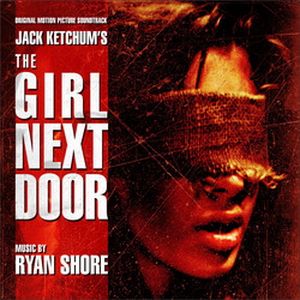
Q: THE GIRL NEXT DOOR (2007) avoided the fantastic premises of the monster/cannibal films in its treatment of familial child abuse taken to horrific extremes. What was your musical approach to this film and personifying its various characters and situation?
Ryan Shore: This movie depicts actual real world events, and so I wanted to be careful not to over sensationalize the story with music. This was especially so due to how horrific the depicted events already are. Therefore, I composed the score with two key elements in mind: One, to establish the suburban 1950’s “normal” depiction of the town they lived in, and Second, to very carefully, and never with a heavy hand, underscore the gruesome events so that they feel as real as possible.
Q: You’ve mentioned that you relish the opportunity for diversity in doing many different types of films. Even with the amount of horror scores you have done, each one is definitely distinct and different from the others. What elements of films such as SHADOWS (2008) or HOME MOVIE (2009) did you look at to center your score on, and what was your conscious process of making sure you don’t repeat yourself when creating music to enhance their scares?
Ryan Shore: I’m so glad you asked that. I always approach each film I’m scoring as a story, as opposed to a film within a genre. When I’m writing music, I’m really not giving specific thought to the ways these types of scenes have been scored before in other movies within the genres. I’m just thinking about each film’s specific story line and what may be the best way to use music to help tell the story. As a result, in hindsight, each score is written so specifically for each film that they are different from each other. I also love constantly exploring different ways, both compositionally and orchestrationally, of expressing all the emotions of a film.
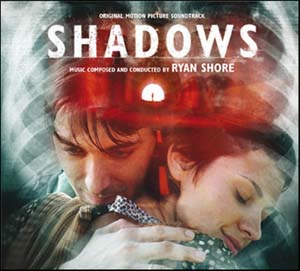
The score for SHADOWS started with a few specific touchstones and then it grew from there. Milcho Manchevski, who did such a beautiful job in writing and directing the film, introduced me to some of the traditional Macedonian folk songs. So we took melodic elements from those songs and transformed them in different ways into the score. For example, we took the opening melody from the traditional Macedonian folk song “Javano” and we slowed it down considerably. Then I put those notes from the melody in the basses and then built some sections of the score over that. So essentially the individual notes of that melody became the basis of the root tones of new chords for new music. The other element that I built much of the score around was the use of a female vocal soloist. We used the female voice to symbolize the maternal nature of the act of returning the bones (the central theme of the film) to their rightful burial place. The Finnish singer, Janita, with whom I’ve worked before on one of her previous albums, sang all of the vocal passages with a stunning beauty. I also created a few other original themes which I wove into the fabric of the score, and also featured a solo cello and solo clarinet as distinctive thematic hallmarks.
HOME MOVIE was such an experimental type of film, and Chris Denham did an amazing job of writing and directing it. We used music sparsely in the film instead of scoring it in the manner of a film – because the entire film is a collection of home movie footage, all of the sounds in the home movies had to be coming from within the movies themselves. I created pieces that came from various locations set within the film – the radios they were listening to, the songs they sang together as a family, a very odd ice cream truck, and a number of other places. It was all very diegetic music, and yet specifically created for the movie and the story.
Q: You worked again with Andrew van den Houten on OFFSPRING (2009), which is in the popular WRONG TURN/HILLS HAVE EYES sub-genre of wayward groups at the mercy of cannibals. Naturally, your score takes a fresh approach – how did you work with the director on establishing the kind of score you and he wanted for this visceral horror film?
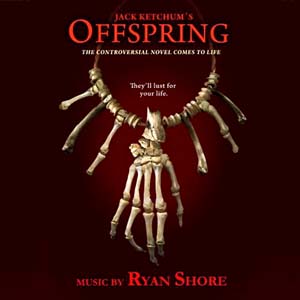
Ryan Shore: Offspring is an extremely experimental score. The events in this film were so disconnected from any kind of real world events that I wanted to create a score unlike one I had ever heard before. I also wanted it to feel incredibly uncomfortable and alienating for the listener. Andrew and Doug Buck (the editor) had begun experimenting with some very odd sounds in the film. I loved the sound of them, and I explored them even further by creating an entire original palate of odd sounds which became the entire palate of the score. I absolutely loved writing the complete score for this film without using a single recognizable instrument or traditional tonal composing! I set out by creating a set of “rules” for which I’d compose to. The rules were: 1) no melodies, 2) no harmonies, 3) no standardized pitches, 4) no set tempos, 5) no recurring themes, and 6) and no recognizable or traditional instruments. Once I embraced those guidelines, it was amazing how freeing it was to write. I never had to think about the key I was in or the notes within those keys. I only thought about the basic elemental aspects of music, such as pacing, in tempo or rubato writing, pitch ranges (i.e.: low, middle and high pitched sounds), sound lengths (short vs. long, percussive, etc.), the timber of the sounds themselves (dissonance vs. consonance in the very nature of the sounds), and of course where and when the pieces are used in the film to score the scenes. All of this was to convey the same emotions you would normally have from traditionally composed music. I love having opportunities to explore “outside the box” per-se, and this was undoubtedly one of those times. I think we created something very unique.
Q: What was your approach to CABIN FEVER 2: SPRING FEVER (2009)? What kind of music did the director ask of you and how did you use your music to intensify the growing threat of the skin-eating virus as it moved from the woods to the suburban high school in this film?
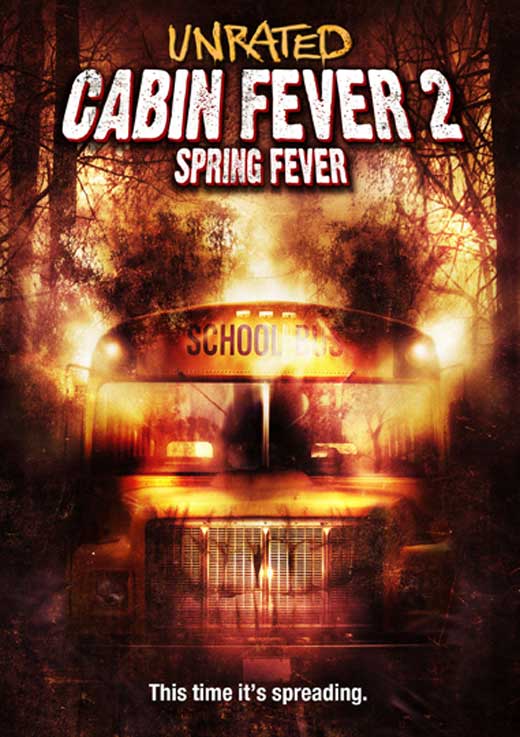 Ryan Shore: Ti West, the director, made a film that was very much a throwback to the kinds of films that were made in the 80’s. That’s when I grew up, so I knew exactly what he was referring to because they are my favorite films as well. He wanted a score that would pay homage to the scores from that time. Ti approached this film as a completely new film, and wasn’t referencing the tone of the original CABIN FEVER. He wanted a completely new approach musically as well. I began by creating a palate of original synth type sounds that we could weave into the score. I probably spent about a week or so just exploring these types of sounds, and that was a ton of fun to do. Once there were enough elements in our sonic toolkit to get started, I jumped right in and began scoring the scenes.
Ryan Shore: Ti West, the director, made a film that was very much a throwback to the kinds of films that were made in the 80’s. That’s when I grew up, so I knew exactly what he was referring to because they are my favorite films as well. He wanted a score that would pay homage to the scores from that time. Ti approached this film as a completely new film, and wasn’t referencing the tone of the original CABIN FEVER. He wanted a completely new approach musically as well. I began by creating a palate of original synth type sounds that we could weave into the score. I probably spent about a week or so just exploring these types of sounds, and that was a ton of fun to do. Once there were enough elements in our sonic toolkit to get started, I jumped right in and began scoring the scenes.
To support the intensifying nature of the film, I began the music with a sense of sparseness to it, allowing the film to breathe and the narrative to unfold naturally. When scoring a film of this nature, I love taking an approach where the music can add to the overall sense of realism. Just making each of the moments feel as real as possible so that the audience can connect to them, rather than feeling disingenuous or being led with too strong a hand. This is particularly so in a film like this where the events can be pretty gruesome and are already sensational — there isn’t much need to go overboard musically in moments like that, or for the music to only comment on what we’re already seeing on the screen. I love for the music to live inside the minds and emotions of the characters, in turn resonating in the emotions of the audience and their experience while watching the film. Jerry Goldsmith really put it best. He said when scoring a western, you don’t score the galloping of the horse. You score the “fear” in the rider. It’s all about the emotional feelings of the characters and the audience.
Also, in support of the arc of the story, towards the latter half of the film when the SWAT team arrives, I introduced more elements into the score – additional elements such as percussion, new textures that we haven’t heard in the first half of the film, and additional electronic elements. Many of these textures were also inspired by the sounds of 80’s synths.
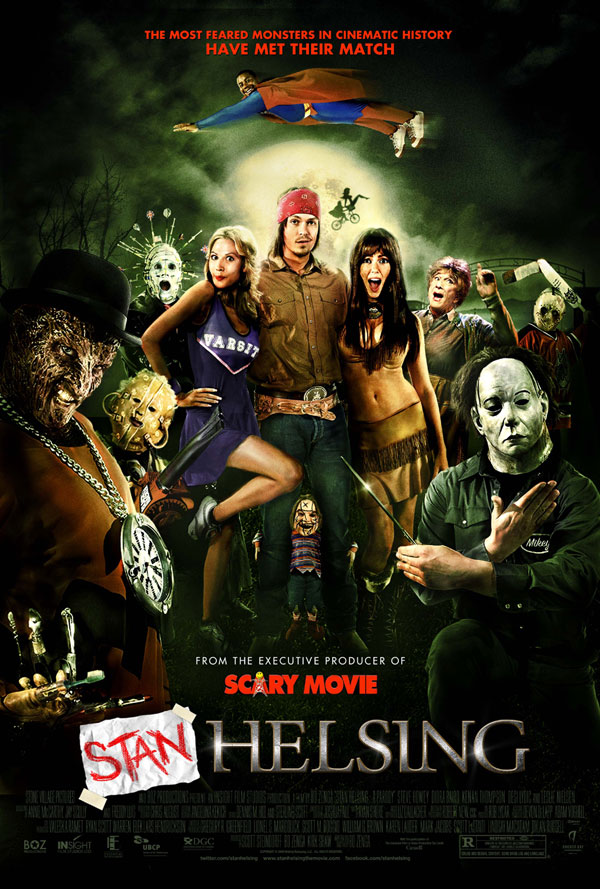 Q: STAN HELSING (2009) was a mix of comedy and horror – and kind of a VAN HELSING for the modern Freddy/Jason crowd. How did you treat these multiple facets and navigate the dichotomy of comedy and horror in this film?
Q: STAN HELSING (2009) was a mix of comedy and horror – and kind of a VAN HELSING for the modern Freddy/Jason crowd. How did you treat these multiple facets and navigate the dichotomy of comedy and horror in this film?
Ryan Shore: In this score the music almost entirely plays the role of the “straight man” – playing all the moments and emotions in the film as though they were real. The cast did such a phenomenal job of delivering the comedy, so there was really no need for me to try to “joke the jokes” with humorous music. We did a panel for the film at the San Diego Comic Con and also at the Toronto Comic Con, and Leslie Neilson (one of the film’s leads; this was one of his final films) was on both panels with us. It was so much fun being around Leslie and being able to talk with him. I grew up on his comedy in AIRPLANE! and THE NAKED GUN films. One of the questions I asked him in the green room was how he was able to be so funny in all of those films. He told me the key to it was that his character doesn’t know where the jokes are. He just played everything 100% straight, and didn’t change his delivery in any way for where the comedy moments are. I believe there’s a great parallel that can be drawn for the way music can play the straight man, in films such as these, as well. I also had a great time delving back into the scores of the classic horror films which were spoofed in the film, and doing my own homage versions of them.
Q: THE SHRINE (2010) was given a very spooky ambient/atmospheric type of score. When you came into this project how did you and Jon Knautz (your director from JACK BROOKS) determine musical direction for this picture?
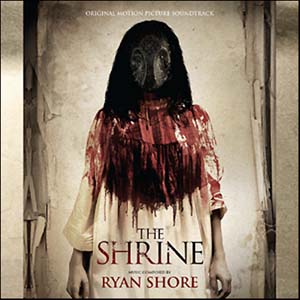
Ryan Shore: My main thought was to try to compose the music in a way to make the story feel as real as possible, so that hopefully the audience could experience all the same emotions that the leads in the film feel. I remember the filmmakers and I having conversations early about the score being orchestral, while at the same time infusing many atmospheric electronic elements within it. I crafted the score around a 3-note motif, based on the musical interval of a tritone, also known as an augmented fourth or diminished fifth (which many years ago was referred to as the “devil’s interval,” since it was such a discordant sound at the time). I composed that 3-note theme to move downward in direction, symbolizing the way the shrine possesses its victims and brings them down into the dark depths of evil.
Q: Your use of pipe organ in this score gave it a particularly fresh texture – how did you use this instrument to describe the cultists and their sacrificial practices?
Ryan Shore: I first composed for the organ in this score for it to be used as source music when we see one of the churches. I later created some highly manipulated variations of those organ sounds and infused them into the dark atmospheric textures which are heard in the torture chamber scenes with the orchestra.
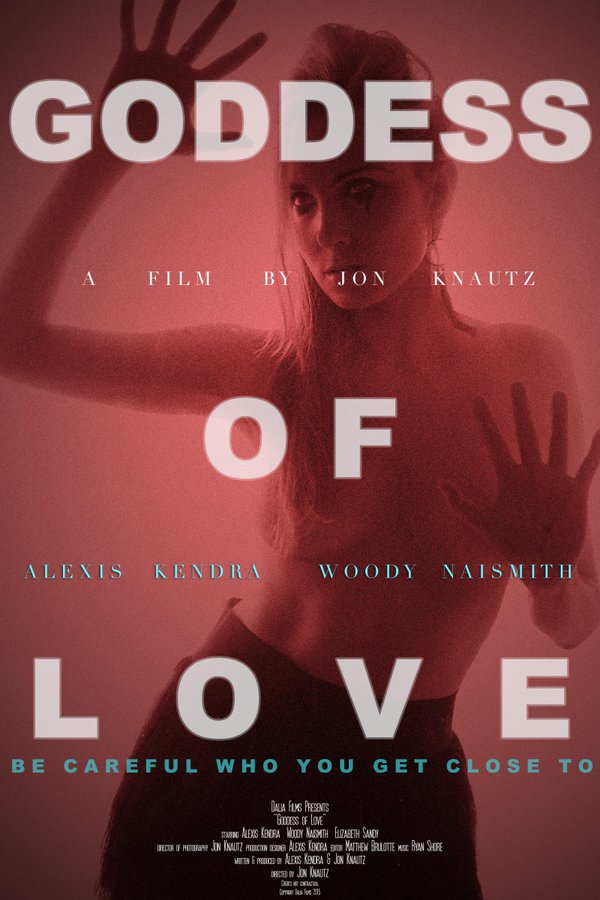 Q: Joe Knautz’s GODDESS OF LOVE (2015) gave you a chance to focus on a psychological horror story and create a score in the jazz idiom. How did this come about?
Q: Joe Knautz’s GODDESS OF LOVE (2015) gave you a chance to focus on a psychological horror story and create a score in the jazz idiom. How did this come about?
Ryan Shore: Once I first watched the film, I suggested to Jon the idea of writing a completely free jazz score, which could mirror Venus’ descent into madness. I began by composing approximately 45 minutes of free jazz for alto saxophone (for Venus’ voice), piano, vibraphone, upright bass, drums and ambient/electronic textures. I performed all the saxophone solos. We then played with those elements and began shaping the score with them. This was a very experimental approach to scoring the film, since we were essentially starting with whole composed phrases and then tailoring them for the film. Once a large amount of the score was in place, I then went back to compose/play more free jazz elements to add to a few specific moments, and to also compose a few additional pieces for scenes which I felt needed a more tightly married scoring approach.
Q: How did you become involved in the MONSTERVILLE: CABINET OF SOULS score? As a Young Adult oriented feature in one of R. L. Stine’s “Monsterville” series, I’m assuming you were conscious of making the score a little less visceral and more “youth friendly” in its function?
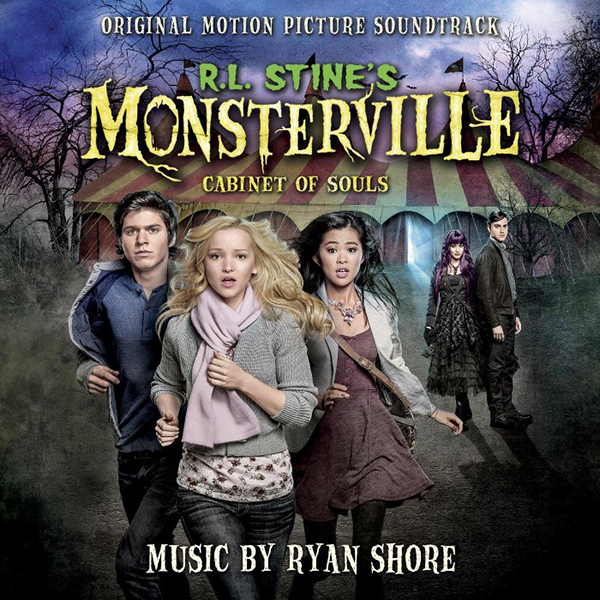
Ryan Shore: Very much so. The Universal music department asked me to score the film, and from the very beginning the producers were very clear that they wanted the film to be “scary” but for it be also be “safe scary” for a family audience. I immediately approached the score in a very different way than I would for other scary films. Instead of composing from a palette of ambient/electronic textures and dissonant orchestral effects, I composed melodic themes for each of the characters, and played up the devilish, playful nature of Dr. Hysteria (the antagonist). There were certainly some scary moments in the film, however I always made sure to do all I could to keep them palatable, so that the film feels like a fun ride, instead of death spiral of hopelessness. Also, with the thought of keeping the film feeling young and palatable, I also wrote an original pop song, titled “Stay True”, with lyrics by Elizabeth Russo, and wrote it be a fun, upbeat, current song for which the entire cast (both good and evil charters) dance to together in the end credits.
UPDATE 7/1/2016: Ryan’s score to MONSTERVILLE been nominated for Outstanding Music Direction and Composition, 43rd Annual Daytime Emmy Awards. Congrats Ryan!!
Q: The film’s setting in a carnival has clearly influenced the tone of the main theme, and the score seems to mix this darkly festive melody with more menacing motifs as the hero teens become more immersed into the soul-capturing motivations of Dr. Hysteria and his corrupted minions. How would you describe the score’s thematic structure?
Ryan Shore: I began by composing themes for Dr. Hysteria, the cabinet, Lillith, Hunter, as well as two calliope themes. I wanted Dr. Hysteria’s theme to have a playful, devilish, whimsical quality, because even though he is the embodiment of evil, he greatly enjoys what he does and he never fears he’ll be caught. Lillith’s theme is harmonically related to his, since she is his daughter, although her theme is much more seductive, since being a seductress is a defining element of her persona. Hunter is also one of Dr. Hysteria’s children, however when we meet him we don’t know of that relationship, so I didn’t want his theme to have any relation to Dr. Hysteria’s music at all. Instead, I wanted his theme to point up his youthfulness and to add a “cool teen factor” so that Beth is attracted to him. The two calliope themes (one is happy in nature, and one is evil) can be heard at the carnival and they mostly appear as source music, however I did adapt one of them into a hip-hop piece which plays as score when Luke transforms into a clown. I composed the cabinet theme to have an alluring quality to it in order to lure Beth and Hunter to it, and it can be heard in the pivotal moments in the cabinet chamber.
Q: Some of your early films found the budget to allow for orchestral scores, others whether by budget or by preference focused on synthetic textures and musical sound design, or digital orchestras, as in the case of CABINET OF SOULS. How would you describe the benefits of both in augmenting elements of horror and heroism, apprehension and action, in these genre scores?
Ryan Shore: There is nothing like the sound of an orchestra, and there is nothing like recording with a live orchestra. I also love composing for synthesized sounds when they can offer sounds which cannot be created with acoustic instruments. On some of my earlier scores, I wrote for synthesized sounds specifically because there wasn’t enough budget to record live. In those cases, I always looked to find an approach to the score where it hopefully feels as though the score still would have been written in this way, even if the budget were many times larger. Certainly with horror music, depending on the specific movie of course, I feel that synthesized sounds can be particularly effective, since they can immediately take the listener’s ears into a place that is completely unfamiliar, which can be a wonderful place to begin composing music for stories which take place in scenarios and worlds which don’t exist in reality. There are also many times that I compose for a hybrid of the two – orchestral and synthesized – and I love writing for the orchestra to push human and emotional elements of stories.
Q: What digital sample libraries are you using currently?
Ryan Shore: I’ve been using CineSamples (for woodwinds, brass, percussion), Cinematic Strings, Omnisphere, Stylus RMX, EZ Drummer, Trilian, Voxos, 8dio (percussion), Real Guitar, and many others.
Q: You’ve also scored two seasons (so far) of Disney Animation’s PENN ZERO – PART TIME HERO (2014-2016). What unique musical opportunities has this series given you and what challenges has it posed?
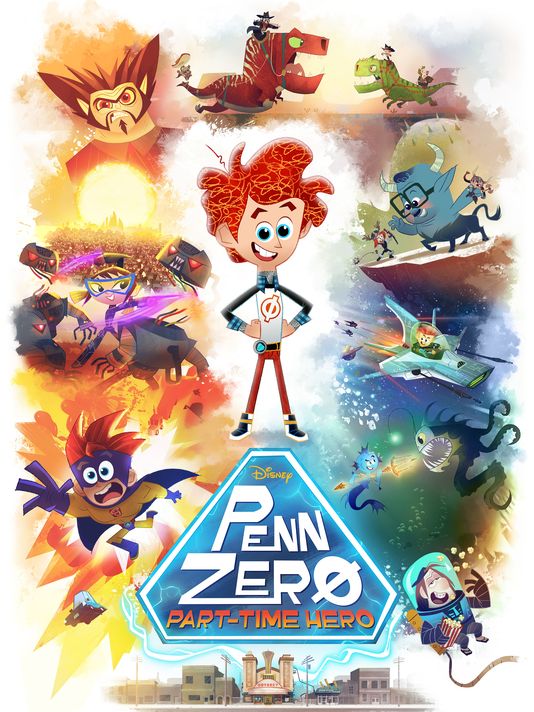 Ryan Shore: PENN ZERO: PART-TIME HERO is the ultimate sandbox for me to play in as a composer. The premise of the show is that every day after school, Penn Zero (along with his two friends Boone and Sashi) get zapped into other worlds to save the day. Every episode is a mini-film, and each one takes place in an entirely different world. In season one, we had episodes in the worlds of the old west, film noir, an Indiana Jones type adventure, a Star Trek type adventure, a Christmas episode, a zombie world, an homage to TOP GUN, and so many others. We even did one episode which was a complete musical, where I composed the music for 8 songs as well the music for all the dialogue to be sung in between. In all, for Season One, I composed over 7.5 hours of music (more 1000 cues), plus the music for over 40 songs. For the TOP GUN type episode, I composed the music for 6 songs and then Disney brought Kenny Loggins in to sing them. Kenny was brilliant to work with in the studio and it was beyond a thrill for me to work with him. Also in the first season I’ve had the opportunity to work with many other notable talents in the studio including Thomas Middleditch, Adam DeVine, Alfred Molina, Larry Wilmore, Tania Gunadi, Beau Bridges, Olivia Holt, and many others. So far I’ve written the music for 20 songs for season 2, and I begin scoring episodes in mid-February. I can’t wait!
Ryan Shore: PENN ZERO: PART-TIME HERO is the ultimate sandbox for me to play in as a composer. The premise of the show is that every day after school, Penn Zero (along with his two friends Boone and Sashi) get zapped into other worlds to save the day. Every episode is a mini-film, and each one takes place in an entirely different world. In season one, we had episodes in the worlds of the old west, film noir, an Indiana Jones type adventure, a Star Trek type adventure, a Christmas episode, a zombie world, an homage to TOP GUN, and so many others. We even did one episode which was a complete musical, where I composed the music for 8 songs as well the music for all the dialogue to be sung in between. In all, for Season One, I composed over 7.5 hours of music (more 1000 cues), plus the music for over 40 songs. For the TOP GUN type episode, I composed the music for 6 songs and then Disney brought Kenny Loggins in to sing them. Kenny was brilliant to work with in the studio and it was beyond a thrill for me to work with him. Also in the first season I’ve had the opportunity to work with many other notable talents in the studio including Thomas Middleditch, Adam DeVine, Alfred Molina, Larry Wilmore, Tania Gunadi, Beau Bridges, Olivia Holt, and many others. So far I’ve written the music for 20 songs for season 2, and I begin scoring episodes in mid-February. I can’t wait!
Be sure to have a visit through Ryan Shore’s web site at http://ryanshore.com/ – there are soundbytes from a variety of scores (and genres), links to a variety of projects Ryan has been involved in, as well as a store where promotional CDs of his scores are sold. – rdl





